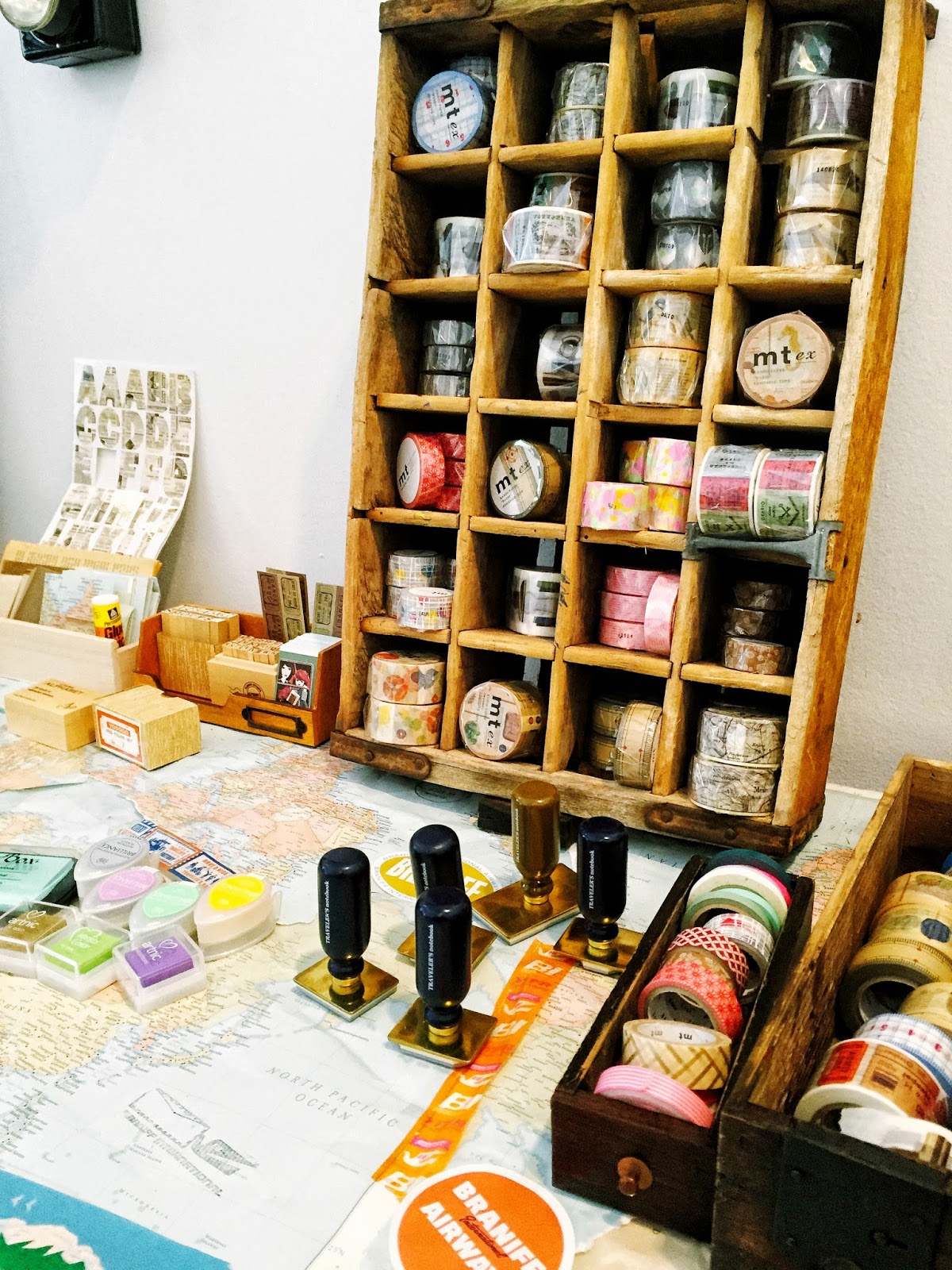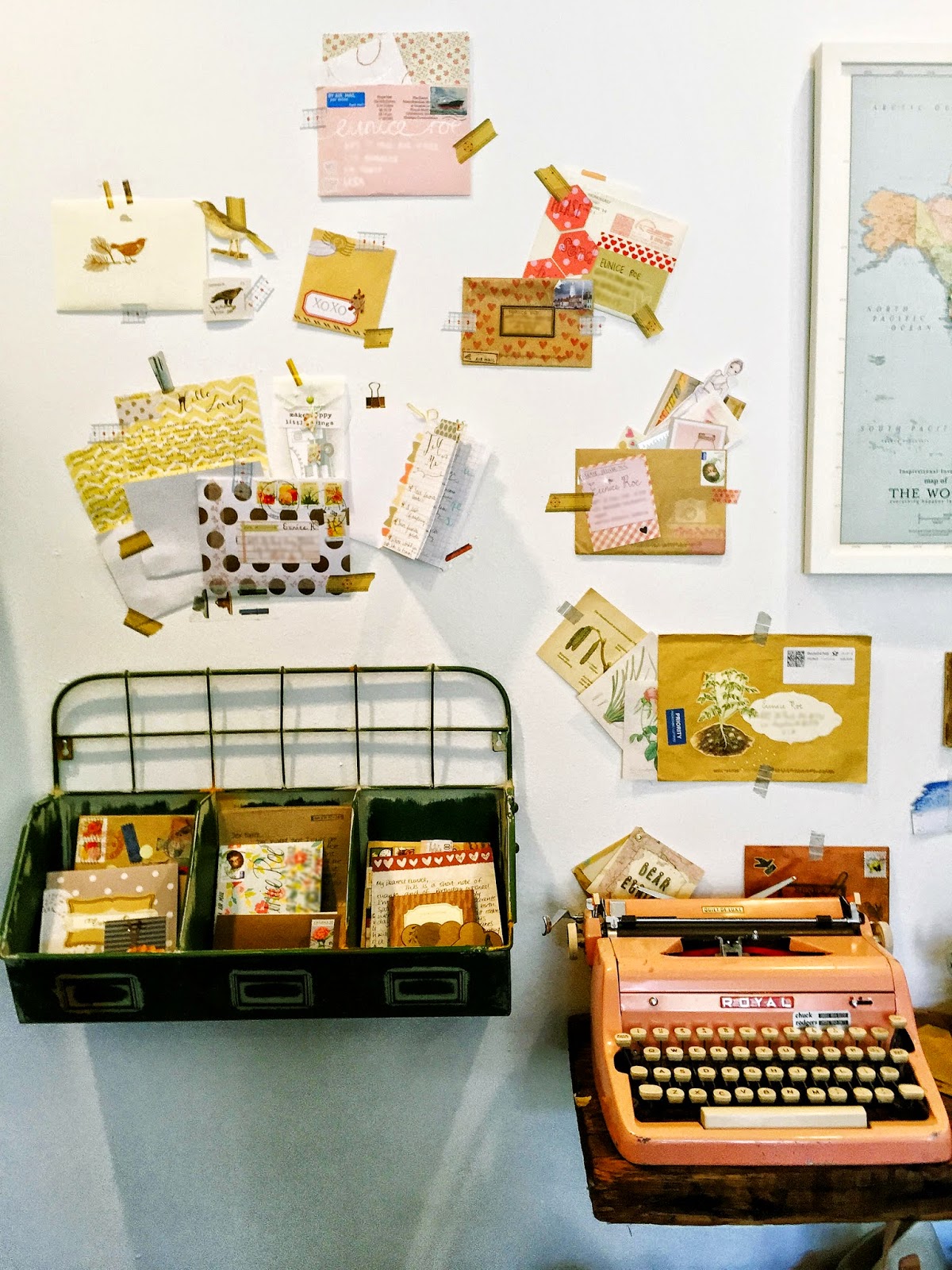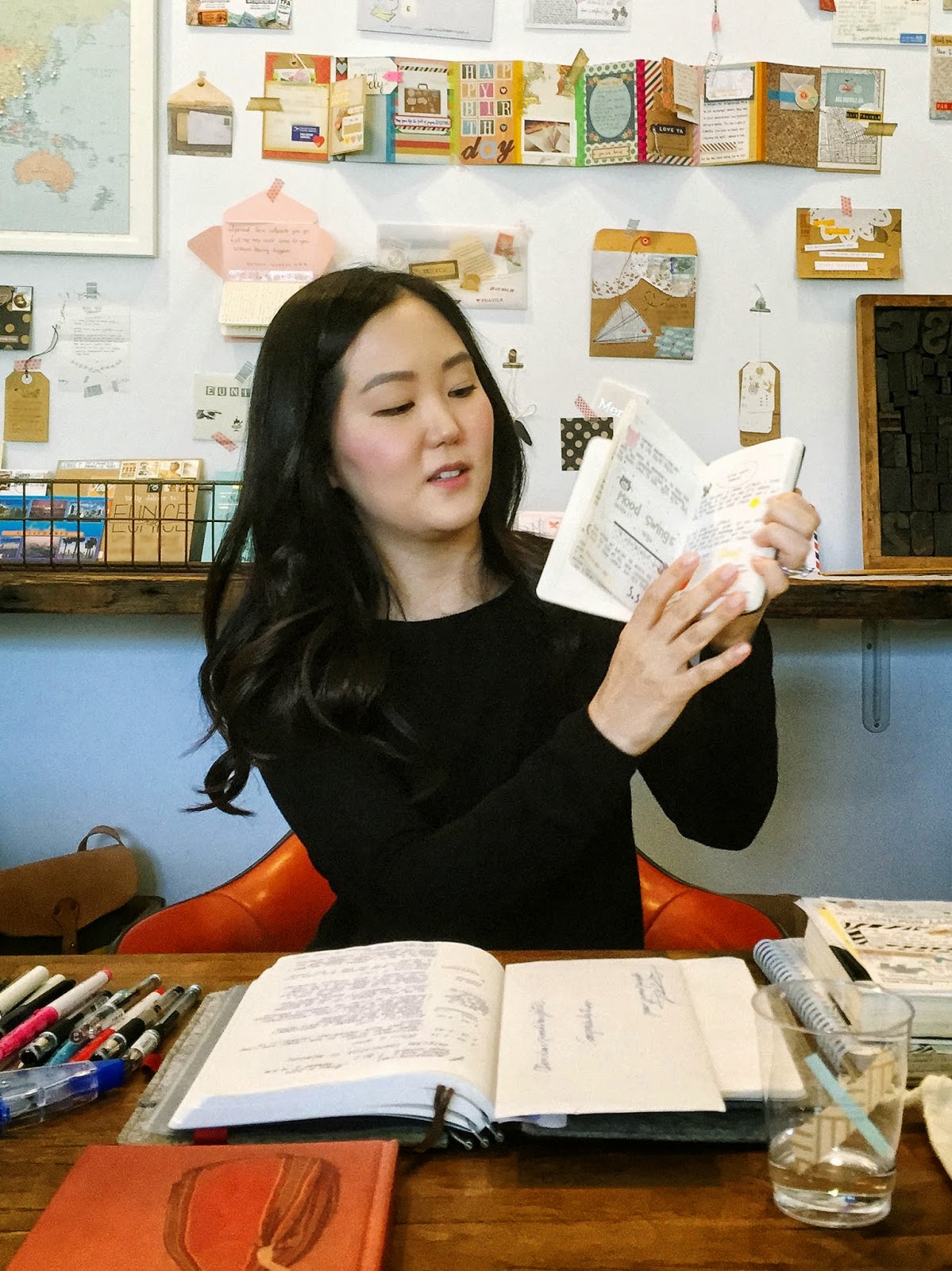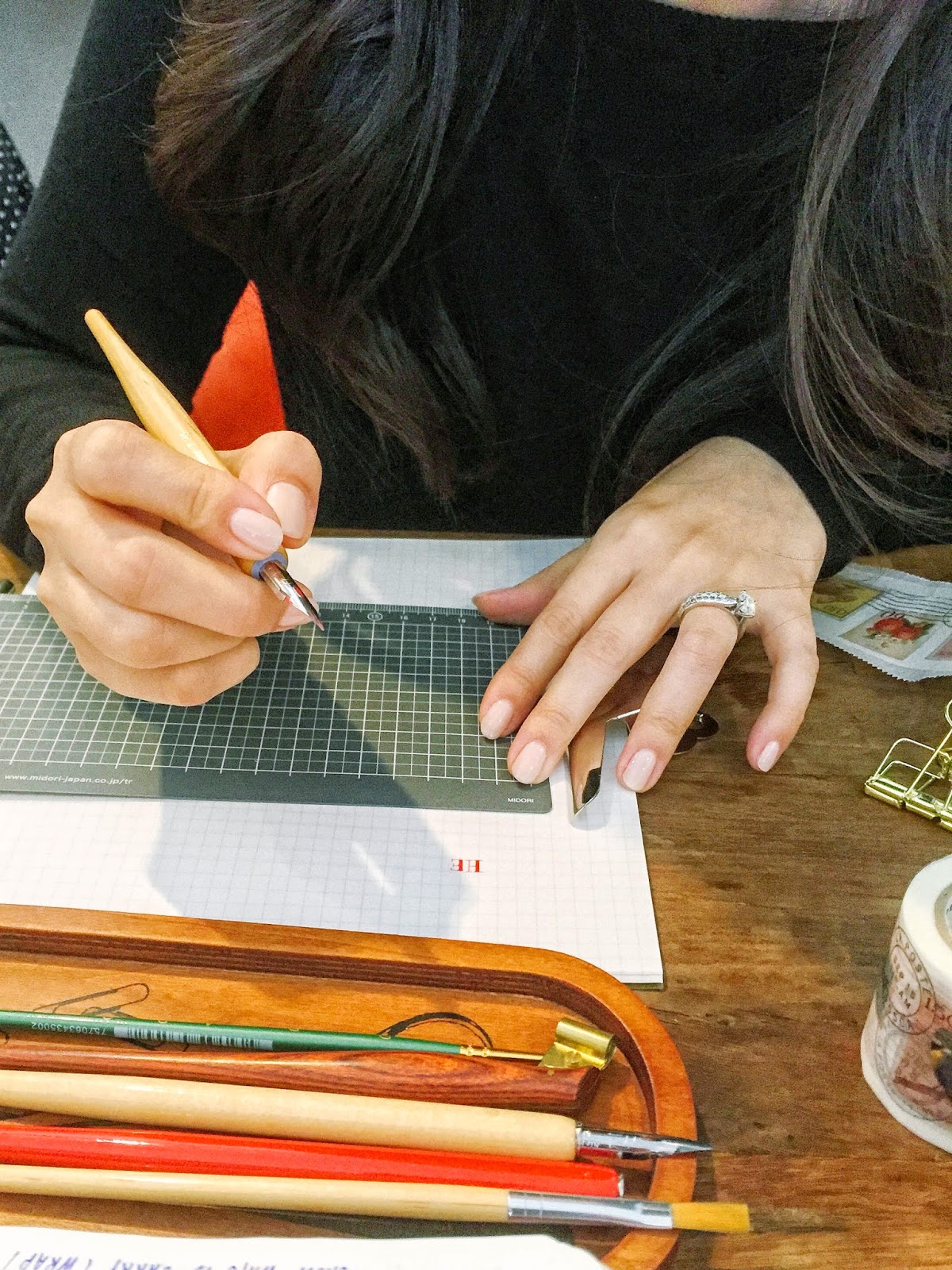Last Sunday, I spent my afternoon at the delightful headquarters of
Baum-Kuchen, a beautiful studio/shop located in Los Angeles, CA. I was there to attend an Inspiration Lab workshop taught by Eunice Roe, the talent behind the amazing Instagram account
@thedailyroe.
I left home very early, just in case the horrible L.A. traffic decided to rear its ugly head. So I got to Baum-Kuchen in plenty of time to snap a few photos before the workshop began.
 |
| Eunice's collection of letters graced the walls |
 |
| a wooden toolbox housed washi tape and other goodies from Eunice's personal collection |
 |
| more of Eunice's personal collection |
 |
| Eunice's journal pages, breathtaking to see and touch in person |
 |
| specially curated treasure boxes for the workshop attendees |
 |
| freshly baked goodness from Lemon Poppy Kitchen |
 |
| a welcome sign hand lettered by Eunice |
 |
| another peek at one of the analogue play tables |
 |
| rubber stamps galore for workshop participants to play with |
 |
| charming typewritten name tags for the attendees |
 |
| the second analogue play table |
 |
| washi tape, Traveler's Factory Stamps, and ink pads |
 |
| Traveler's Factory stickers |
 |
| lovely letters and a vintage typewriter |
 |
| alphabet rubber stamps, stencils, and ephemera for the participants to use |
 |
| Eunice's workstation |
 |
| another view of her workstation |
After everyone had arrived, Wakako and Eunice welcomed us and asked each person to introduce themselves to the group and share a little bit about their journaling experiences and their reason for coming to the workshop. I had never seen so many Traveler's Notebooks in one room! Having no family or friends who journal, it was great to meet other journalers, hear their interest and goals, and get a peek inside their personal journals.
Eunice shared her story as well. She told us how both of her parents were art majors and how she started journaling as a child in elementary school. Eunice shared her earlier journals with us and explained how her style has evolved over the years, from cute to the elegant vintage style she is known for today.
Eunice talked about why she journals and takes the time to create her incredibly beautiful and detailed pages. She went through all the different materials and tools she uses to create her spreads. She walked us through the process of how she creates her weekly pages and shared lots of helpful tips. Eunice even showed us how to make washi tape stickers using parchment/baking paper from
Daiso.
 |
| Eunice shares her early journals |
 |
| Eunice demos how to make washi tape stickers |
Lastly, Eunice demonstrated how she uses watercolors and a calligraphy nib to hand letter quotes in her Traveler's Notebook. She uses a paint brush to load the watercolor onto the nib, changing the colors from time to time to create the gorgeous color gradients that appear in the letters. A lot of patient and painstaking work goes into those beautiful quotes you see on her pages.
 |
| Getting ready for the watercolor calligraphy demo |
 |
| Eunice shows us how she letters the quotes you see on her weekly TN spreads |
 |
Eunice explains how she photographs her spreads for IG
|
The workshop participants then mingled, snacked on goodies from Lemon Poppy Kitchen, shopped (of course!), had fun with the Traveler's Notebook "photo booth," and worked on their journals using the materials and tools provided at the two analogue tables
Wakako, our gracious host, and Eunice had set up. Eunice answered questions and hand lettered personal messages in the journals of everyone who asked.
 |
| Workshop participants try out the goodies at the analogue tables |
 |
| Eunice lettering a message in an attendee's journal |
Many thanks to Wakako and Eunice for a truly enjoyable workshop, and I eagerly look forward to Inspiration Lab No. 2!
 |
| A great time was had by all, and we can't wait to do it again! |


































